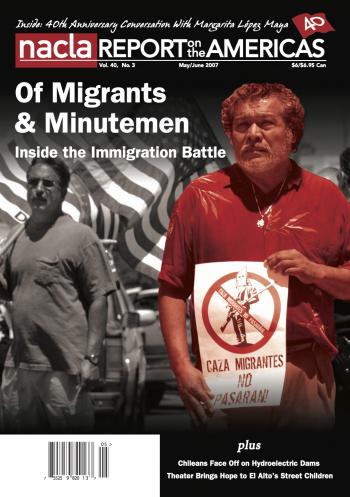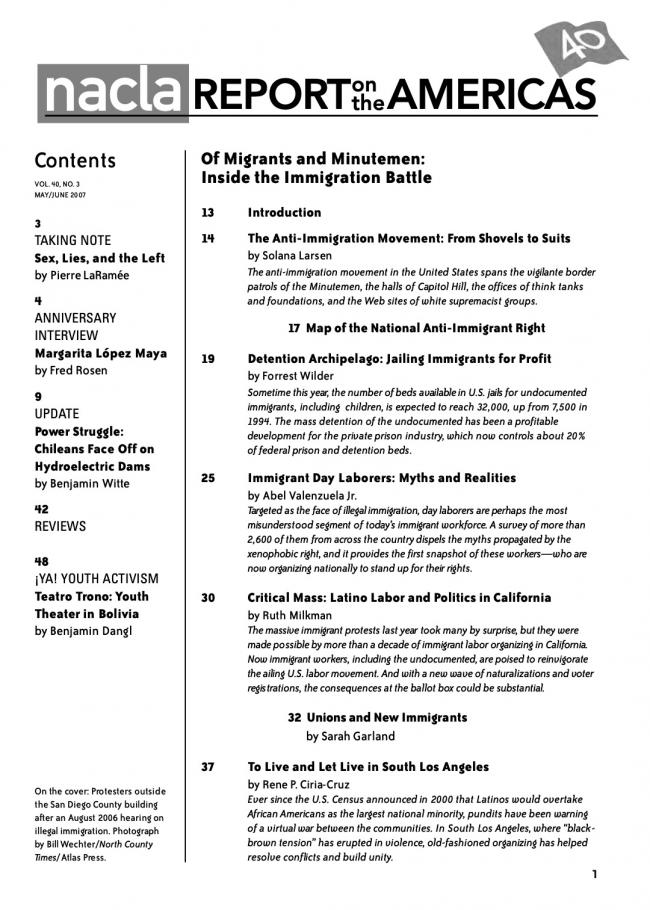Report
Last year’s massive immigrant rights marches heralded the emergence of a new civil rights movement in the United States. But while this wave of popular protest heartened the progressive community, it also sparked a considerable backlash. The U.S. Bureau of Immigration and Customs Enforcement (ICE) has stepped up its workplace raids and deportations of undocumented immigrants in recent months, while also intensifying its efforts to police the border.
Sometime this year, the number of beds available in U.S. jails for undocumented immigrants, including children, is expected to reach 32,000, up from 7,500 in 1994. The mass detention of the undocumented has been a profitable development for the private prison industry, which now controls about 20% of federal prison and detention beds.
Since at least the 1990s, immigration has been an emotional, hot-button issue, with pundits, elected officials, and think tanks like the Center for Immigration Studies mounting a growing anti-immigrant campaign. Their spin often relies on shoddy research and rhetorical arguments that present immigration as simple, ahistorical, and unconnected to broader structural forces. In its battle against “illegals,” the anti-immigrant right has unleashed not only cowboy justice along the U.S.-Mexico border, but also urban protests at worker centers and home improvement stores where mostly immigrant men gather in search of work. Groups like Save Our State, the Federation for American Immigration Reform, and the Minutemen have targeted these day laborers as the face of undocumented immigration, blaming an easy target.
As millions of immigrants and their supporters took to the streets last year, the anti-immigration movement mobilized its own forces. The number of state and local anti-immigration groups in the United States has exploded, growing by 600% in the last two years. In 2005, there were fewer than 40 groups; today, there are more than 250.
Ever since the U.S. Census announced in 2000 that Latinos would overtake African Americans as the largest national minority, pundits have been warning of a virtual war between the communities. In South Los Angeles, where “black-brown tension” has erupted in violence, old-fashioned organizing has helped resolve conflicts and build unity.
Most U.S. labor unions agree on what to do about the some 12 million undocumented immigrants now living in the United States: Legalize their status. But sharp disagreements remain on the question of new immigrants, and the fault line lies mostly between unions in the Change to Win (CTW) coalition and the AFL-CIO.


